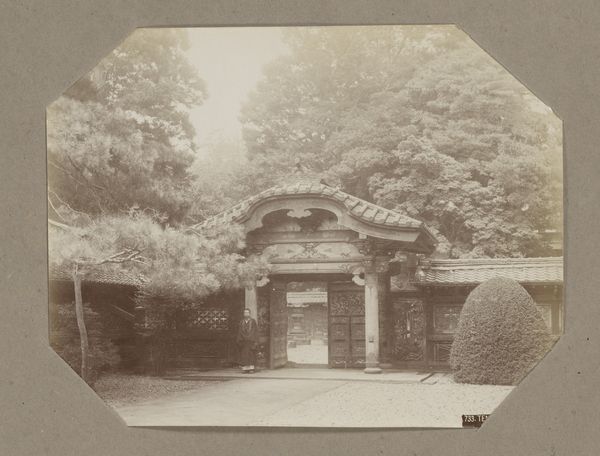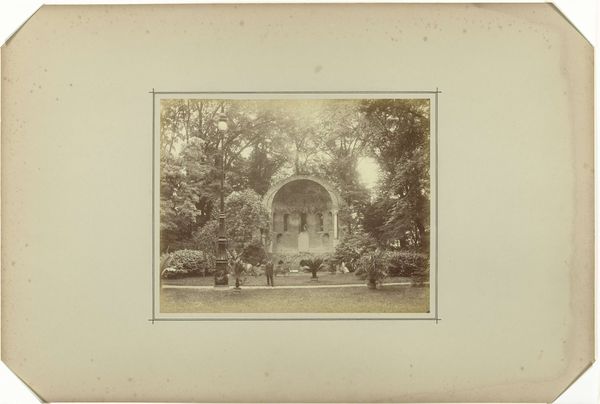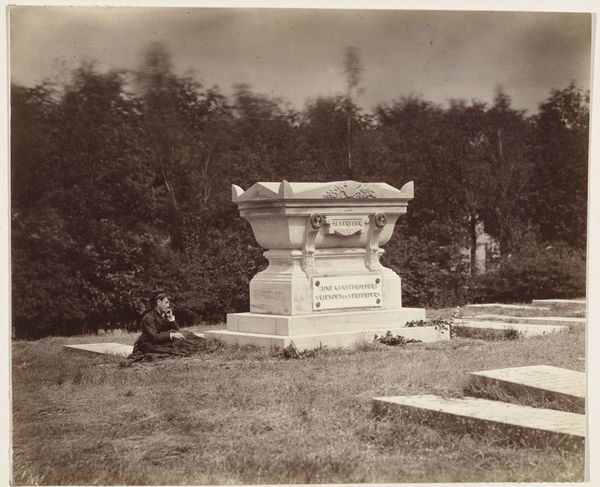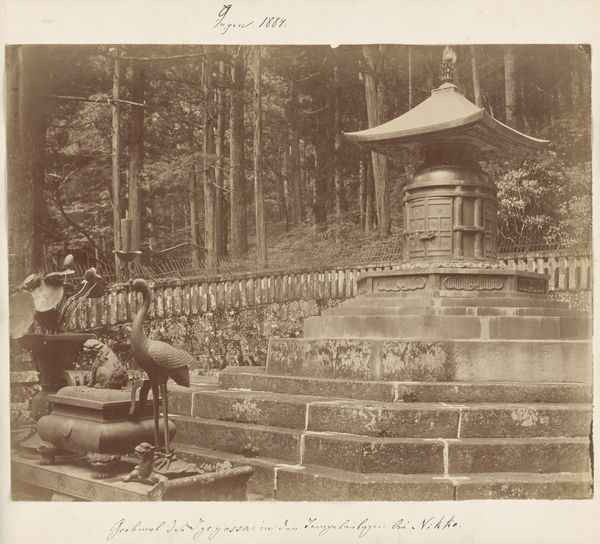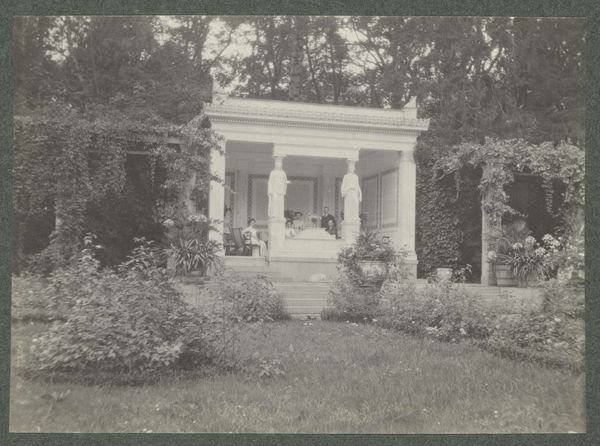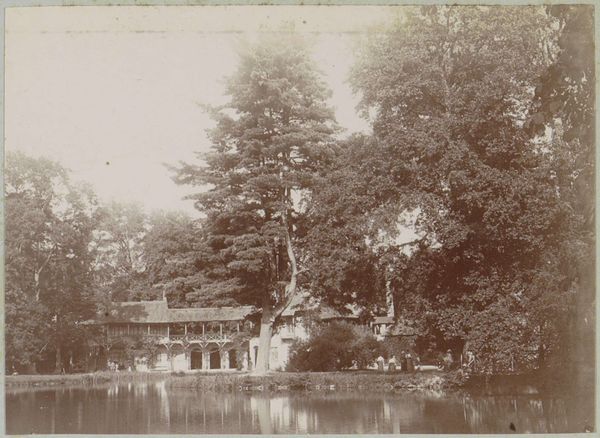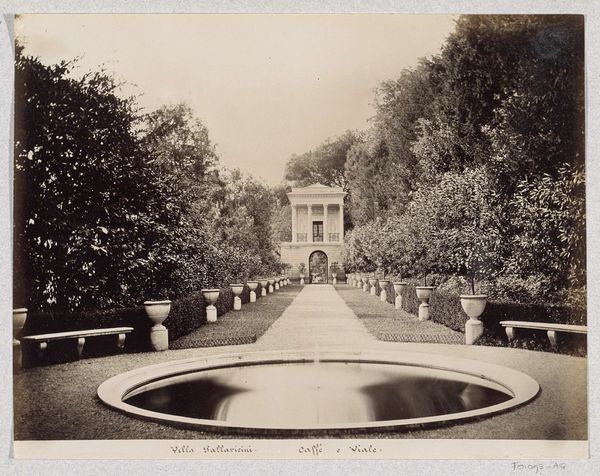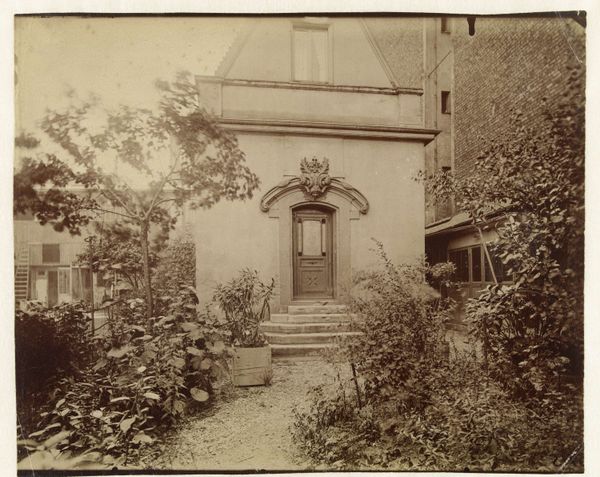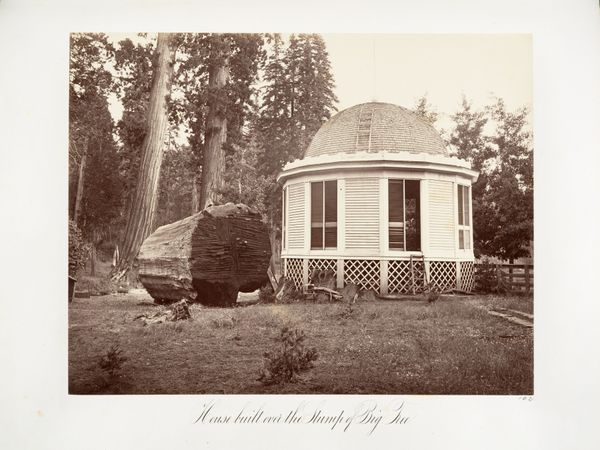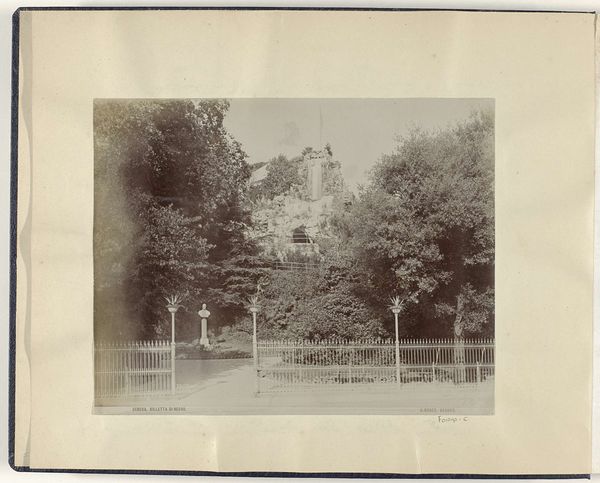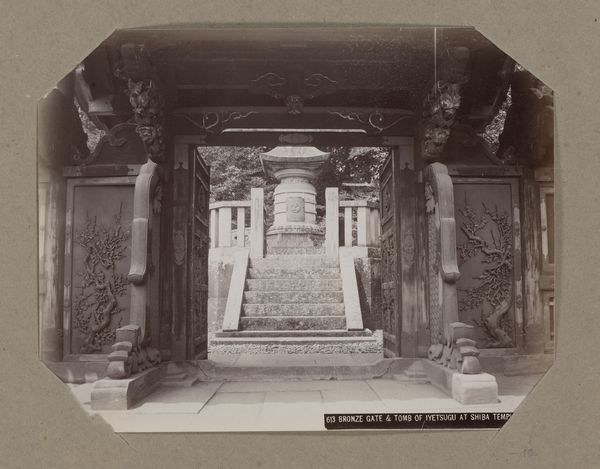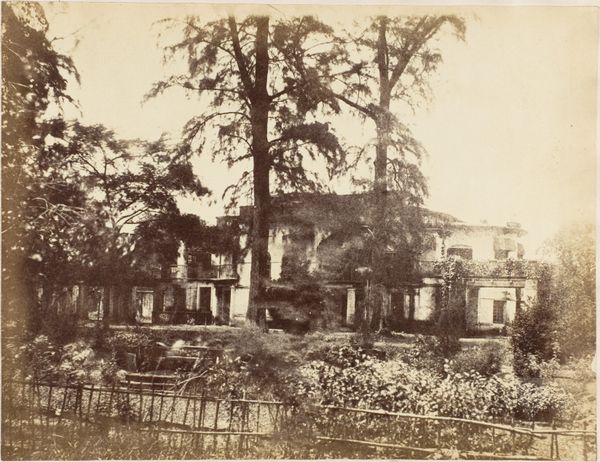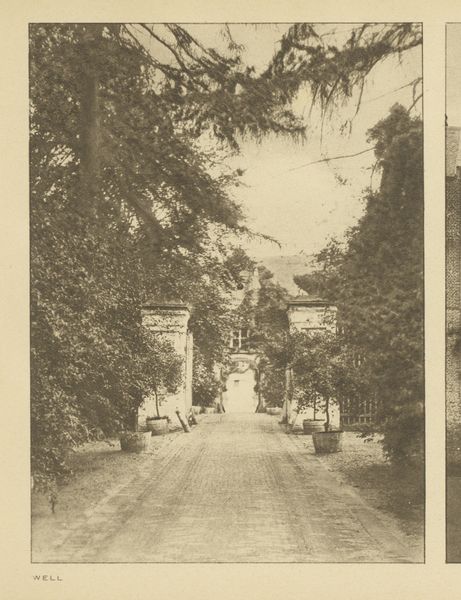
photography, gelatin-silver-print
#
asian-art
#
landscape
#
photography
#
orientalism
#
gelatin-silver-print
#
19th century
Dimensions: height 213 mm, width 263 mm, height 295 mm, width 318 mm
Copyright: Rijks Museum: Open Domain
Editor: Here we have a gelatin silver print from 1884, a photograph of the "Graftombe van Shogun Tokugawa Ienobu in Zōjō-ji, Shibapark, Tokyo." It's such a still and formal image, almost reverent in its depiction of the Shogun's tomb. What historical context can you give me here? Curator: Absolutely. Consider this photograph not just as a depiction of a tomb, but as a visual document reflecting Japan’s encounter with modernity. It was taken during the Meiji Era, a period marked by rapid westernization and a complex negotiation of cultural identity. How does the photographer, likely a Westerner, frame this site of traditional power? What narratives about Japanese culture and history are being constructed and for whom? Editor: That’s fascinating. It definitely feels like there's an outsider's perspective, framing this traditional space. Do you think it was intentionally constructed with that gaze in mind? Curator: Possibly. Photography itself was a Western import, a technology imbued with specific ways of seeing and representing. This image may reinforce Orientalist perspectives that exoticize and distance the viewer from the subject, reinforcing notions of Western superiority through the very act of capturing and displaying Japanese culture. What is made visible, and what is strategically obscured? Editor: So the act of photographing becomes a statement in itself. I guess I hadn't considered the power dynamics inherent in the image. Curator: Precisely. And what of the subject? Tokugawa Ienobu was a significant figure, his tomb a symbol of dynastic power. How does the photograph negotiate this power, and how does its existence, mediated by the western gaze, impact the tomb's ongoing cultural relevance and meaning? Consider too the interplay between permanence and ephemerality – the tomb as a lasting monument, versus the fleeting nature of the photographic moment. Editor: It's incredible how a simple landscape photograph opens up so many questions about cultural representation and power dynamics. I’ll never look at historical photos the same way again. Curator: Indeed. Recognizing the multiple layers of context and perspective embedded within artworks like this allows for a richer and more critical engagement with history itself.
Comments
No comments
Be the first to comment and join the conversation on the ultimate creative platform.
